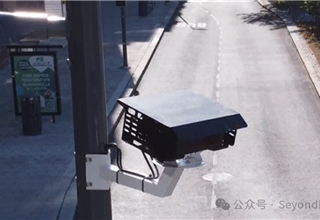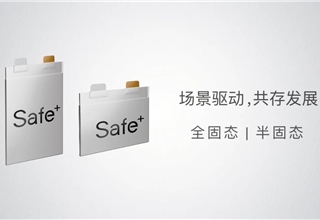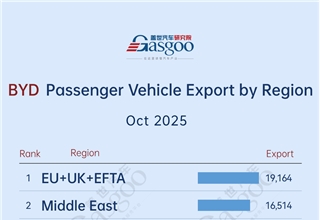.jpg) Gasgoo.com: Currently, what challenges do suppliers’ bankruptcy trends bring to sourcing? How do purchasers make preparations to avoid their suppliers entering bankruptcy? In what way could purchasers master their suppliers’ financial problems? How do purchasers manage their suppliers in this kind of situation?
Gasgoo.com: Currently, what challenges do suppliers’ bankruptcy trends bring to sourcing? How do purchasers make preparations to avoid their suppliers entering bankruptcy? In what way could purchasers master their suppliers’ financial problems? How do purchasers manage their suppliers in this kind of situation?
Dr. Marcus Hoffmann: The current global financial and automotive crisis effects also China and nearly all players in the market. During the last years of exorbitant growth the companies neglected efficiency and risk minimization topics. This is now coming back on them, e.g. almost none of the companies established a full Supplier Risk Management. Now the purchasers are facing some suppliers filling for bankruptcy without any upfront indication regarding financial distress or delivery problems. Therefore, especially in the automotive industry, many OEMs and Tier1/2 have started to address these challenges. Most important is the necessary transparency on the situation of each supplier and combination with the own dependency on the supplier. Here the main interface to collect the information is the procurement department of each manufacturer. The dependency can be minimized by an optimum supplier portfolio as well, e.g. 2-3 suppliers for one part category. But transparency and identification of risky suppliers are just the first 2 steps. The main important step is the definition of tailored measures with regard to the situation of the supplier. This has normally to be done jointly and upfront, before the worst case occurs.
Gasgoo.com: With OEMs increasing platforms cooperation, they also increase joint procurement, what are the difficulties in joint procurement? Why joint procurement? Some people said companies should integrate and standardize their own sourcing products rather than joint procurement, what's your opinion on this matter? What kinds of products are proper for joint procurement and how to develop a successful joint procurement?
Dr. Marcus Hoffmann: The main challenge for joint procurement of OEMs is first of all the identification and determination of joint parts and materials. Due to this difficulty and the 'tailored' differences in nearly all parts and systems most of the joint sourcing activities are related to raw materials currently. On the other hand more and more cooperations between large OEMs are in discussion for joint platforms and developments. Due to this they target to decrease R&D cost, but also procurement cost by volume bundling in the future. Some of the manufactures also establish joint sourcing activities with their suppliers to get better prices by the bundling effect. This helps the suppliers in difficult times as well, but is still quite rare, because each party is normally very focused to the own challenges only. To improve the situation both parties need to benefit from such arrangements and must be willing to make the own cost structure transparent as well as to share the saving benefits later in a proportional ratio.
Gasgoo.com: Many purchasers are looking at centralized procurement, will it become a trend?
Dr. Marcus Hoffmann: Just centralized procurement cannot be the answer to a really very global automotive industry with different standards, regulations and market needs. An increasing tendency to localize more and more sophisticated parts and systems is accompanied with growing relevance of the local sourcing departments. At the same time the idea of "global localization" is gaining importance. Meaning, that the global cost structure and footprints of suppliers is becoming very relevant to ensure the best possible cost, quality and in time delivery to all local market needs/standards of OEMs. To establish this, is a very challenging tasks and needs sophisticated tools to derive decisions on full transparency of influencing factors like tooling cost, local know how, logistics, packaging, time, quality prices, raw material availability, plant footprint etc.
Gasgoo.com: What are the structures of sourcing cost? How to lower sourcing cost? What supporting system should be built to make sure every method to be carried out? What should be a sourcing unit like in order to successfully promote such cost reduction ways?
Dr. Marcus Hoffmann: Talking about sourcing cost has mainly two different aspects. The first is related to the procurement volume. Next to part and material cost, also tooling, packing, logistic, insurance cost etc. have to be considered for contracting and negotiations. Main levers are price reductions, e.g. due to volume bundling, but you can also use payment terms and discounts. Very important, but very often neglected, is the idea of joint Value Engineering approach with supplier in the development phase. The exchange and discussions on certain developments from different point of views very often reveals surprising solutions and saving potentials – which for sure should be shared between the partners.
The second aspect of sourcing cost is related to the organization and structure of the procurement departments. This is a very sensitive topic due to the different sourcing parts, materials and volumes. Also the global footprint and degree of internationalization of the company has to be reflected to find the best setup. Normally, each solution should be tailored after a detailed analysis to special needs of the company – a simple benchmarking for the 'right setup' is not sufficient.
About Dr. Marcus Hoffmann: Dr. Marcus Hoffmann is Member of the Management Team of Roland Berger Strategy Consultants and Supporting automotive clients globally for more than 7 years.









